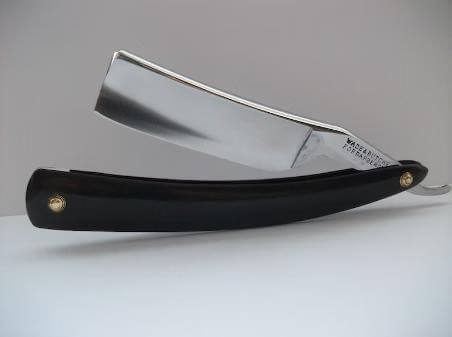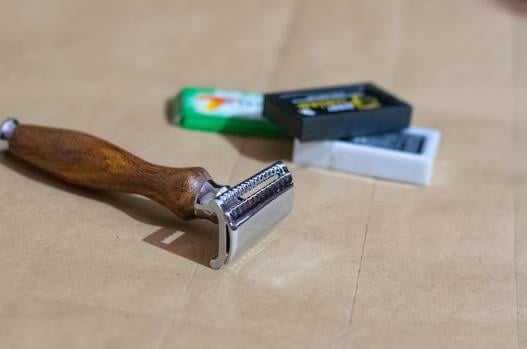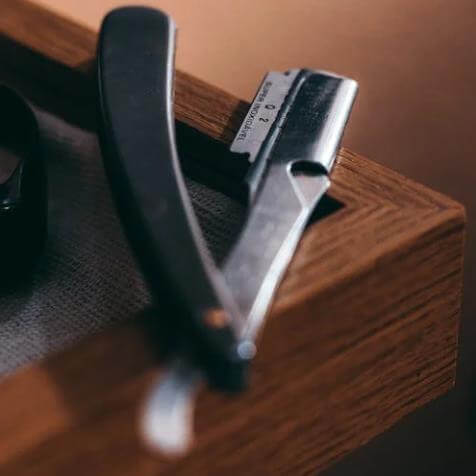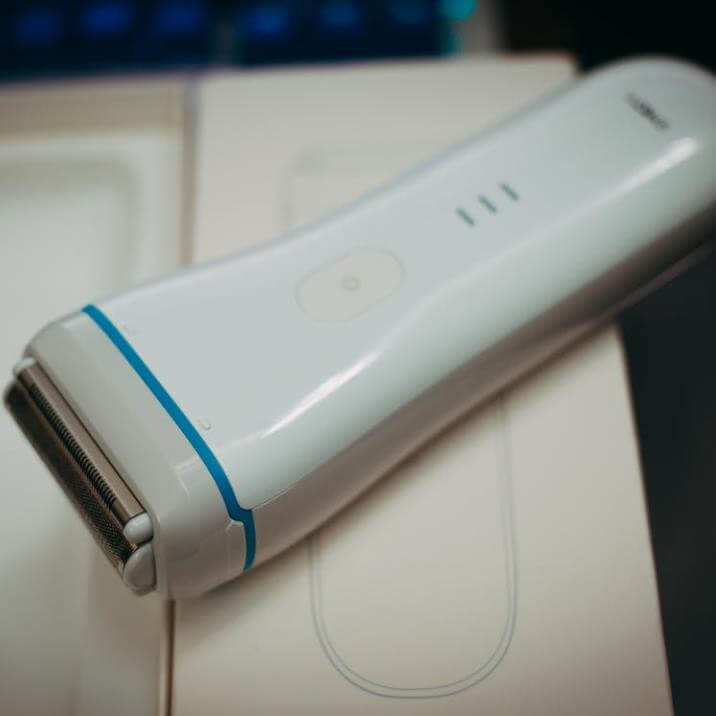Despite the not-so-good reputation that shaving has in the hair removal ecosystem, it’s almost irreplaceable, especially for men. If you must trim your
beards
, and eyeshadows, and have a stylish haircut. You cannot whisk a razor and its allied equipment aside. Shaving is all about using blades or razors to cut hair very close to the skin, and despite
the itchiness that many people report that it causes
, it’s undeniably the oldest hair removal method.
Two types of shaving equipment are safety and straight razors. Their names alone speak volumes about their roles and build, and you can almost decide which of them will suit your needs. But if you have any reason to doubt your choice between the two, here is where you get the clarity you need.
Whichever you choose between a straight and a safety razor, I can guess your overall aim is to get a smooth and safe shave with no stubble or bumps. Also, you probably want to ensure that while getting the best shave that you deserve, you don’t drain your pocket in the process. In light of this, we’re going to consider which helps to achieve these aims.
But before we start the comparison, let’s consider these two razor types for the benefit of first-timers.
What is a Straight Razor?

A straight razor looks much like a short knife. It basically has two parts: the pointed straight blade or metal part and the wooden handle that holds it in place. If you’ve used the home knife before, you can relate to a straight razor. It isn’t as wide or straight cut as the knives we use at home, but it follows a similar build.
Before
Gilette
started making a different type of razor in the 1900s. Straight razors held sway everywhere. Whether in a local barbing shop or at home with someone helping to remove hair from your head, the tool you would see on your hand was a straight razor. It’s usually sharp and can cover a large area quickly.
What is a Safety Razor?

Invented in the 19th century
by King Gillette, safety razors are usually T-shaped, with the handle forming the long tail and the broad head containing the double-edged blade. The design is hugely metallic, and users can replace the razor whenever they feel it’s becoming dull.
When this invention first hit the market in the early 1990s, many people considered it expensive. It did not get much recognition until much later, when King Gilette found a way to make the blade cheaper.
Straight Razor vs. Safety Razor: Which is Better?
To decide which of these shaving tools is better, we will consider some factors. These include their designs, safety, ease of use, price, availability, and others. Let’s begin
Better Design: Winner – Safety Razor

The design of a shaving tool determines its versatility, ease of handling, and overall effectiveness. In this regard, both razors are not exceptional, giving the more modern options that offer ergonomic designs available nowadays. However, safety razors are comparatively better in design than straight razors.
First, the double edges of a
safety razor
enable it to function from both ends, unlike straight razors, which can only function from one end. Second, a traveler will find a safety razor easier to carry than a straight razor. In fact, some airlines consider straight razors unsafe and require their passengers to drop them off before boarding a plane.
Some straight razors are also compact and can be kept in their safety woods, but the outlook is generally not as ergonomic and attractive as those of safety razors.
Smoother Shave: Winner – Straight Razor
Besides excellent design and look, one critical consideration anyone planning to purchase a razor would like to factor in is how close the razor shaves. The smoother the razor can leave their skin, especially within a short period, the better. And comparing the two options we’re discussing in this piece, a straight razor edges out a safety razor.
Using a straight razor requires holding it very close to the skin. And considering that this tool is always sharpened, it’s no surprise that it delivers an incredible job if handled by an expert. A safety razor, on its part, focuses extensively on users’ safety during shaving and doesn’t make as much contact with the skin as a straight razor does.
Better for Safety: Winner – Safety Razor
Shaving comes with risks, such as nicks, bumps, and cuts. Many people think twice before reaching out for a razor because of this. The safety razor undeniably got its name from the safety it assures users. Stuck between two metallic covers, its blade is minimally exposed and makes reduced contact with the skin.
Safety razors make shaving something minimally skilled people can do for themselves at home. Once the razor is correctly installed, anyone can shave their face or body without visiting a professional barber. But that’s next to impossible with a straight razor; you will have to seek the services of an expert to avoid terrible cuts and side effects.
Straight razors do not have protective guards, and they need to be handled at the correct angle to achieve the required objective. While both razors have their risks during usage, straight razors carry greater risks than safety razors.
Value for Money: Winner – Straight Razor

The purchasing price of an item is not the biggest issue but the value that accompanies the money spent. From their inceptions, both razors do not carry the same price tags. Straight razors have always been more expensive to purchase than safety razors. However, you don’t have to keep changing the blade. Besides the
routine maintenance
required to prevent rusting and dullness, you can practically use it throughout a lifetime.
You can’t say the same for a safety razor. Besides requiring a blade change almost every week, you may also need to change the entire tool after a few years of use. I know this is relative because there are different grades of this tool. But generally, blade replacement costs over time add up, making safety razors more expensive to own than a straight razor.
Maintenance Hassle: Winner – Safety Razor
Not everyone has the luxury of time to sharpen a dull blade or keep it lubricated to avoid rusting. But these things are necessary to enjoy a safety razor for a long time. Without them, the longest time a straight razor can last its owner is probably a month, which will not justify the amount spent to acquire it. Maintenance is perhaps the most noticeable setback of straight razors, for which it cannot match safety razors.
With safety razors, you only need to change the blade periodically and are ready for a clean shave. If you have 30 minutes left to catch a flight, you can get yourself cleaned up in minutes with this razor; there is no need for extensive preparation or checks if you have a new blade at home. But for straight razors, things are usually not that fast unless you’ve maintained an excellent maintenance habit for months.
Time Taken to Complete a Shaving Session: Winner – Safety Razor
Again, time is an essential consideration in our ever-busy world. No one wants to spend the whole day removing unwanted hair from their body. As it goes, the earlier a tool can get the job done, the better for the user. Straight razors may have an extensive surface area, suggesting that they can cover an ample space within a short time, yet, the care and patience required in using them can extend the treatment time.
A safety razor, on the other hand, can be very fast once the user masters the direction of hair growth and works with a very sharp blade. Before someone using a straight razor knows what’s happening, the slow but steady safety razor user has won the race.
Better for Versatility: Winner – Straight Razor
Hairs grow everywhere – bikinis, nostrils, armpits, pubic areas, legs, and chests. If the surface is flat and easily accessible, safety razors will work perfectly on such. But for hidden body areas like the nose and bikini lines, using a safety razor can be impracticable.
Professional barbers and users of straight razors can manipulate this tool to remove hair from almost any body part. It may take a while and extra care, but it’s possible. Thus, a straight razor is more versatile than a safety razor.
The Verdict
Safety razors are unarguably more popular these days than straight razors, and that’s not by accident. Men have realized it’s safer, faster, and less demanding to maintain than straight razors. Unless for a few people who love old-school stuff, most bathrooms and homes probably have the former instead of the latter.
Safety razors are usable by individuals who aren’t professional barbers, and blades have become quite affordable now. As such, it’s safer and more affordable to invest in quality safety razors than straight ones. With minimal care, you can own and use one, unlike the straight razor. But do you agree with this? Let us know your opinion and experience in the comment section.

 By myulikeadmin
By myulikeadmin



